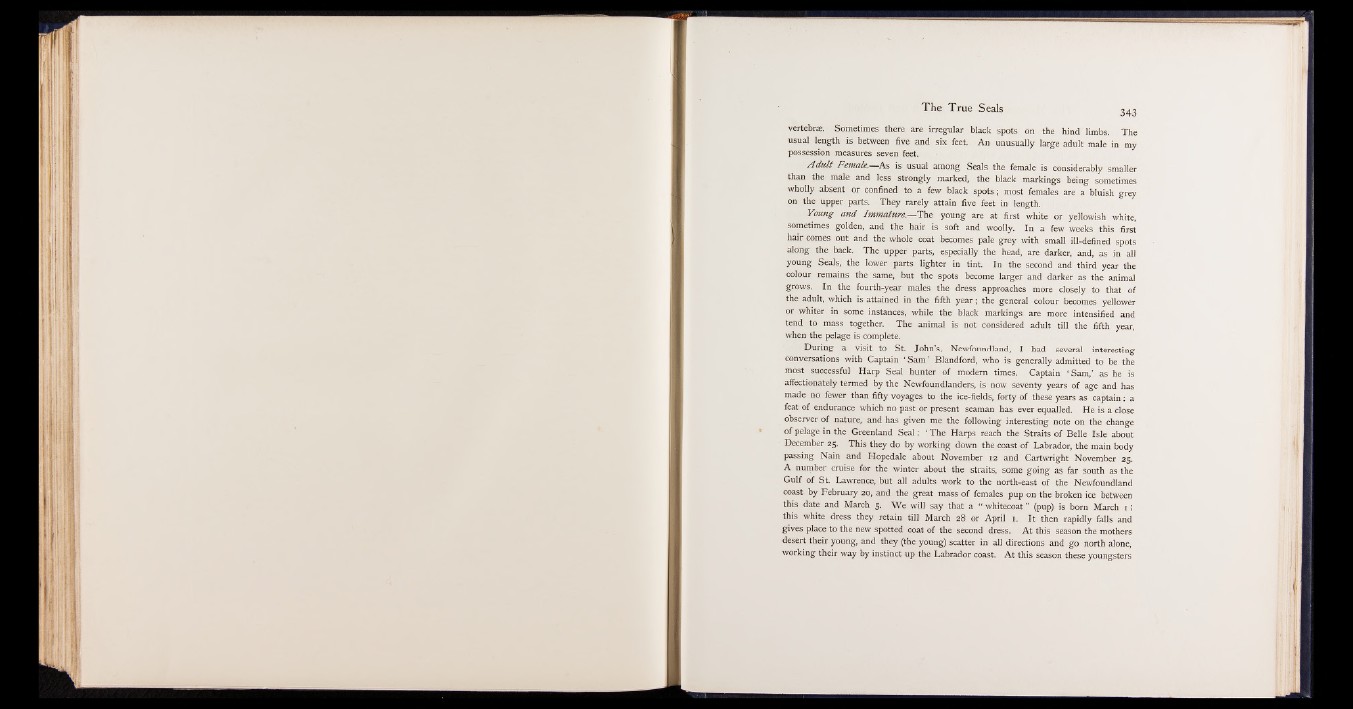
The True Seals 343
vertebrae. Sometimes there are irregular black spots on the hind limbs. The
usual length is between five and six feet. An unusually large adult male in my
possession measures seven feet.
A d u lt Female.— A s is usual among Seals the female is considerably smaller
than the male and less strongly marked, the black markings being sometimes
wholly absent or confined to a few black spots; most females are a bluish grey
on the upper parts. They rarely attain five feet in length.
Young and Immature.— The young are at first white or yellowish white,
sometimes golden, and the hair is soft and woolly. In a few weeks this first
hair comes out and the whole coat becomes pale grey with small ill-defined spots
along the back. The upper parts, especially the head, are darker, and, as in all
young Seals, the lower parts lighter in tint. In the second and third year the
colour remains the same, but the spots become larger and darker as the animal
grows. In the fourth-year males the dress approaches more closely to that of
the adult, which is attained in the fifth year; the general colour becomes yellower
or whiter in some instances, while the black markings are more intensified and
tend to mass together. The animal is not considered adult till the fifth year,
when the pelage is complete.
During a visit to St. John’s, Newfoundland, I had several interesting
conversations with Captain ‘ Sam ’ Blandford, who is generally admitted to be the
most successful Harp Seal hunter of modern times. Captain ‘ Sam,’ as he is
affectionately termed by the Newfoundlanders, is now seventy years of age and has
made no fewer than fifty voyages to the ice-fields, forty of these years as captain: a
feat of endurance which no past or present seaman has ever equalled. He is a close
observer of nature, and has given me the following interesting note on the change
of pelage in the Greenland Seal: ‘ The Harps reach the Straits of Belle Isle about
December 25. This they do by working down the coast of Labrador, the main body
passing Nain and Hopedale about November 12 and Cartwright November 25.
A number cruise for the winter about the straits, some going as far south as the
Gulf of St. Lawrence, but all adults work to the north-east of the Newfoundland
coast by February 20, and the great mass of females pup on the broken ice between
this date and March 5. We will say that a “ whitecoat ” (pup) is born March 1;
this white dress they retain till March 28 or April 1. It then rapidly falls and
gives place to the new spotted coat of the second dress. At this season the mothers
desert their young, and they (the young) scatter in all directions and go north alone,
working their way by instinct up the Labrador coast. At this season these youngsters